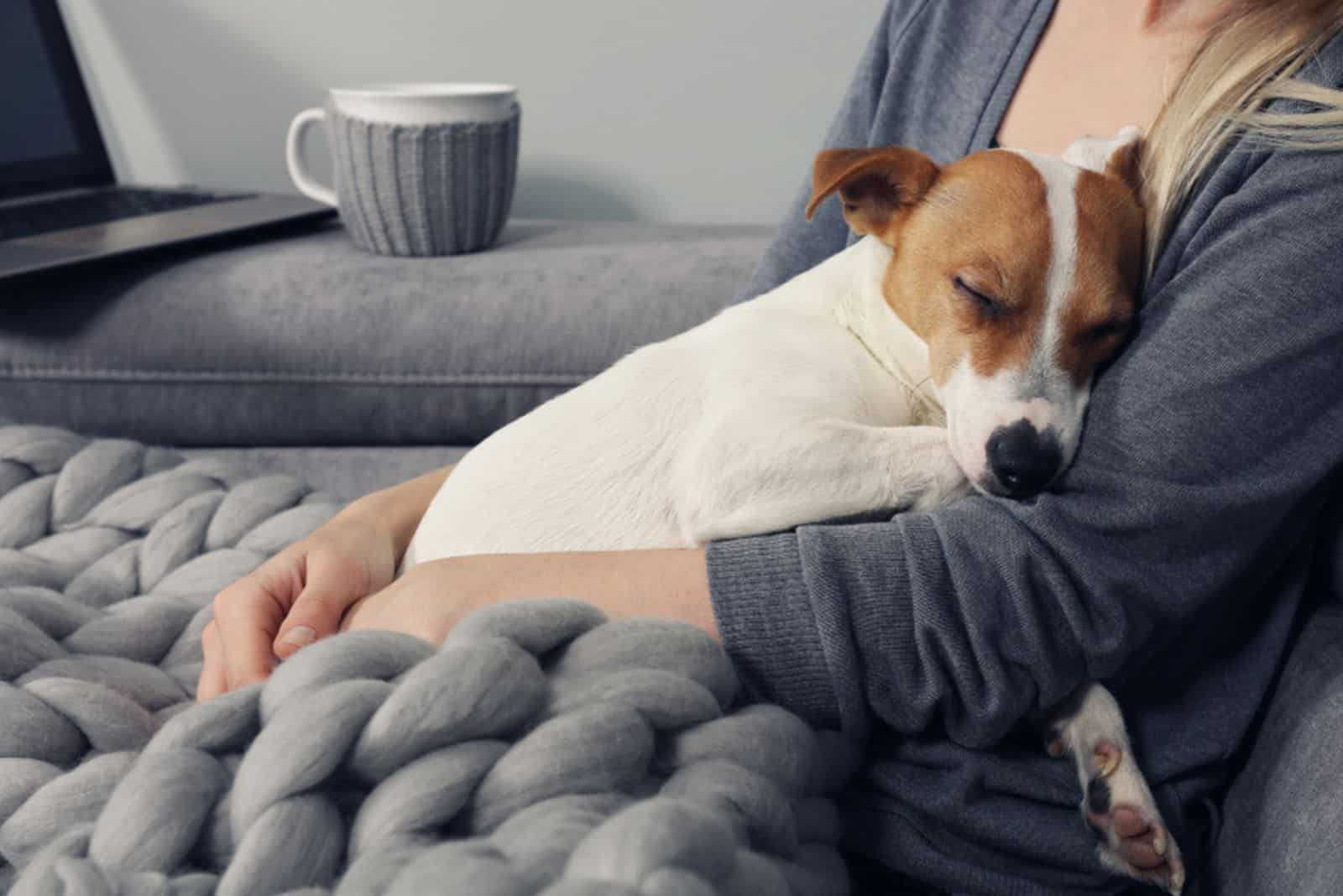Anyone who has ever owned a dog knows how difficult it is to deal with your furry friend being sick or injured.
They cannot talk and tell us what happened or where it hurts, so it’s important for you as a pet owner to know how to read their behavior, so that you can know when something is not alright, and most importantly, provide good first-aid help.
Dogs have two more legs than us, so the probability of a sprain is therefore twice as high. While a lot of limps will actually require veterinary attention, some might not be that serious, and can be treated at home.
“Why is my dog limping?” is a very common question among dog owners. Limps in dogs happen a lot more than you probably expect, so it is normal that a lot of dog parents search the wonders of the internet for an answer, just like you.
Don’t worry – in this article, we’re going to discuss everything about dog limping, and how to treat a limping dog at home. By the end, you’ll know exactly how to react, and what to do to make your furry baby better.
How To Treat A Limping Dog At Home
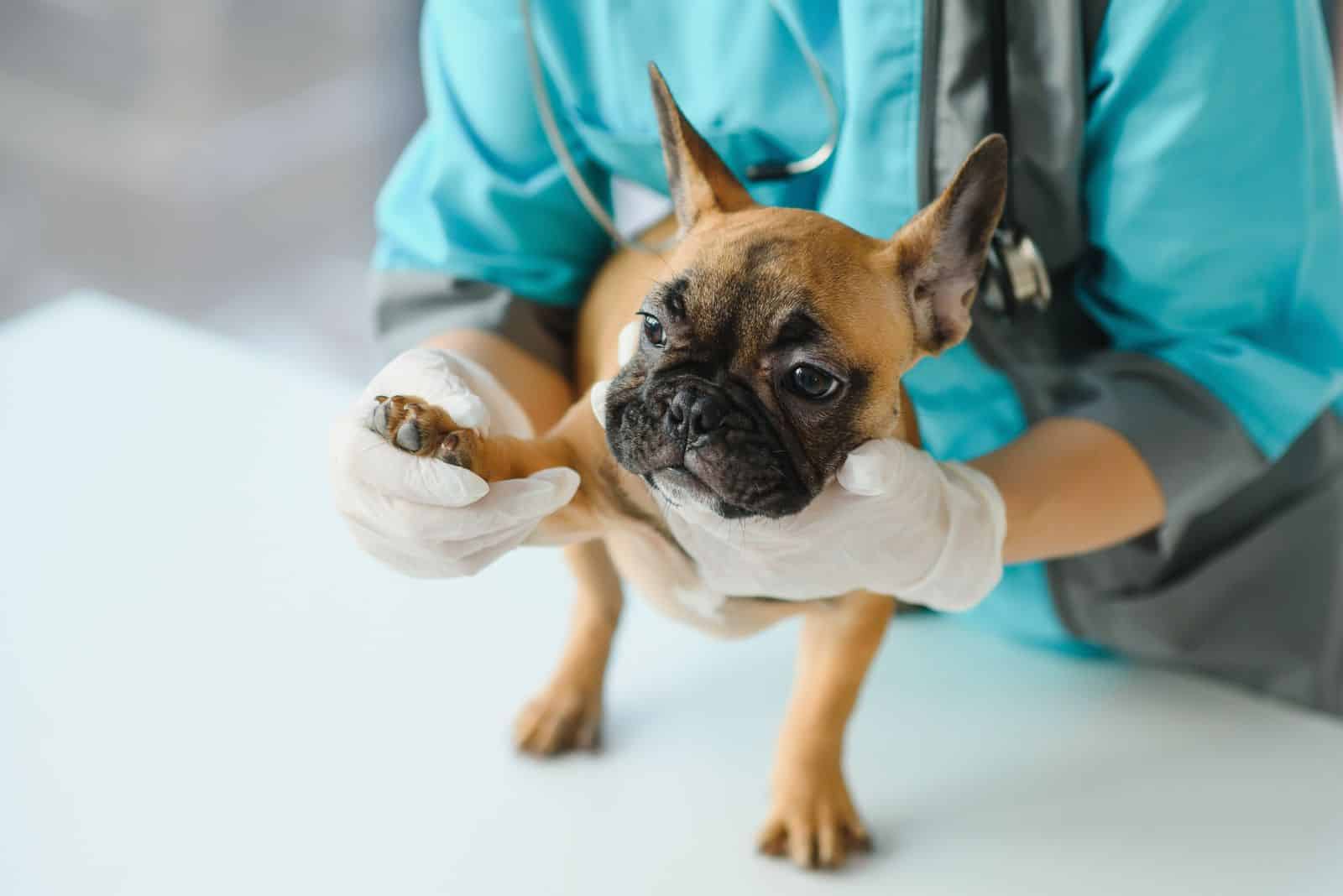
When it comes to the treatment of a limping dog at home, it is important to know that this should be a two-step process. First things first, you need to identify and recognize the limp. Sometimes, it is easy to see which leg is affected, but that is not always the case.
Treating A Limping Dog At Home:
- Identify and recognize a limp
- Treat the pain
Limping is a very common reason why dog owners visit a veterinarian. If you notice that your pup is acting a little bit weird, and he or she is not as active as usual, you will need to observe your dog’s gait in order to identify any abnormalities.
Pay special attention to any signs of discomfort or pain, and the way they place their feet.
If you look carefully, you’ll soon notice which leg your pup is favoring (right or left, front or back). Typically, you’ll see your dog hiking up on one leg or, if the sore leg is one of the front legs, you may notice your dog’s neck dropping down in the direction of the pain.
Usually, dogs will try not to put quite as much weight on that sore leg, which will be the biggest clue. This is the same kind of behavior that can be seen in humans. When something hurts, we try to stop the pain by exposing it to as little activity as possible.
You also need to ask yourself a couple of questions regarding the timeline of the dog’s limp. When was the first time you noticed your dog limping? Did it happen after some trauma or activity? Is the pain consistent or is it perhaps worse at certain times of the day?
These questions can significantly help you determine what caused your dog to limp, and whether it is something that will require an emergency vet visit or be solved at home.
Lameness Exam
Besides a general observation, you might also need to do a lameness exam in order to evaluate your pup’s mobility and identify the source of limping.
It is important to disclose beforehand that if your dog is in severe pain, DO NOT try to do the exam. Manipulating a broken leg can cause more pain, and even worsen the injury, so if you are not sure, please consult your veterinarian.
Also, keep in mind that a dog in pain will bite, even if it is the sweetest dog ever, so be cautious just in case.
You can start the exam with the paws. Check for any foreign body, redness, cut, puncture, or infection. Look between the toes, and apply gentle pressure. If you hit a sore spot, the dog will pull the leg back.
Read More: Dog Paw Pad Peeling – 5 Reasons And 5 Solutions
After that, palpate the joints. Gently touch and press all leg joints to help identify any area of swelling or tenderness. Gently flex and extend all joints, and move all of your dog’s limbs in different directions to see if there is any discomfort and resistance.
If you are not sure, or something looks or feels unusual, compare it to the other leg. If you are still unsure by the end of the exam, we always recommend consulting with a veterinarian.
So, before we discuss how to actually treat lameness in dogs at home, we first need to learn what it actually is, and what can cause it. So, let’s jump to it.
What Can Cause Lameness In Dogs?
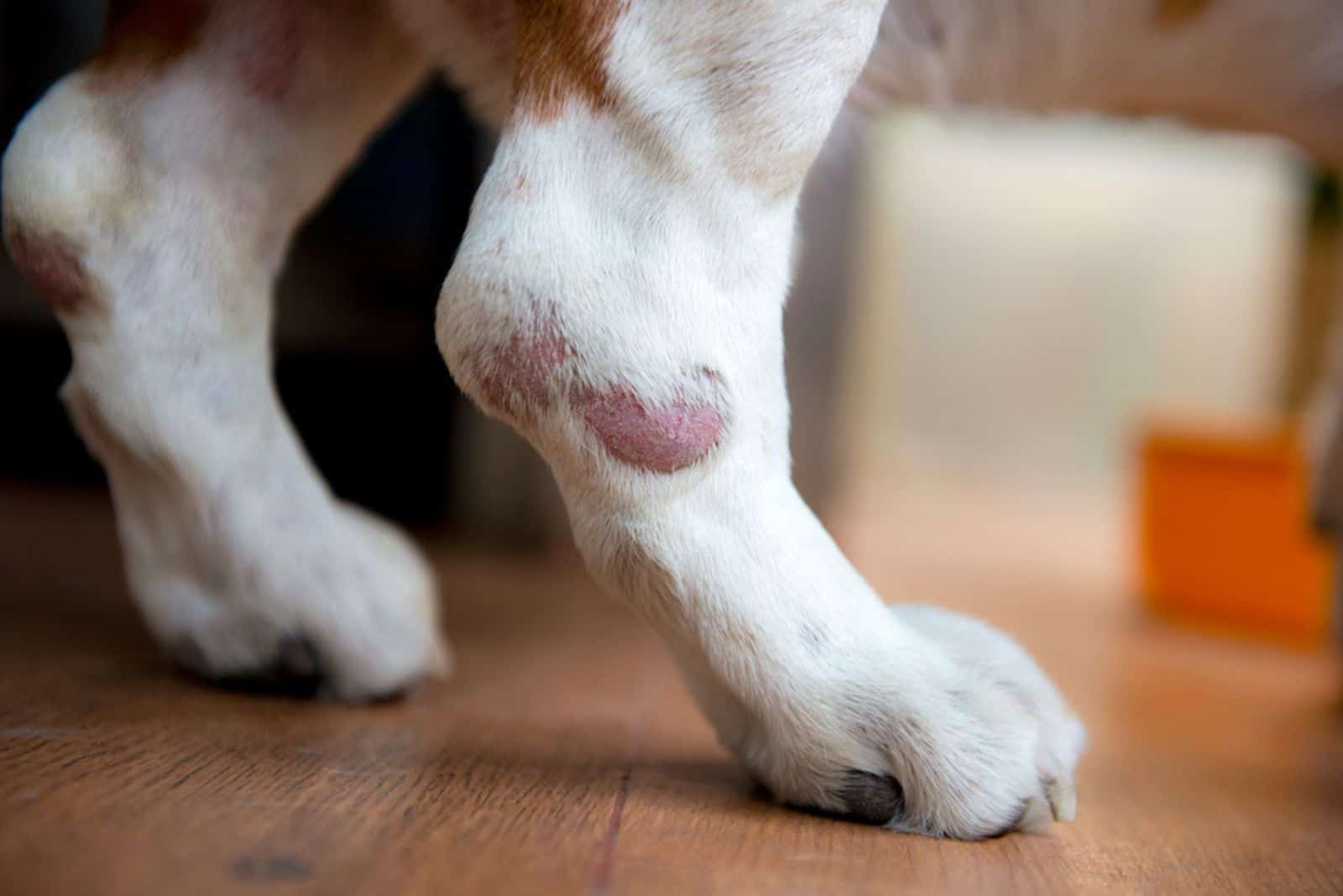
Lameness is a medical term that signifies an impediment to walking, which can be caused by any physical injury or weakness. It can be due to one or more parts of the leg or foot, such as bones, skin, ligaments, muscles, or nerves.
There are two different kinds of limps:
- sudden limps – usually caused by trauma or an injury
- gradual onset limps – either a symptom of an underlying condition or a disease that develops more slowly over time
Lameness can be caused by many things, and we will mention the most common reasons here:
- Joint luxation (dislocated joint) – a dislocation or separation between the bones that normally formulate a joint. The ends of the dog’s bones move out of their usual place.
- Injured leg – a soft tissue injury, like a strain, a sprain, or a CCL injury. If your dog experiences lameness in his back legs, there is a possibility of a torn/raptured CCL (cranial cruciate ligament), most commonly known as ACL. A lot of things can cause ACL fracture, such as activity, breed, age, or certain conditions like obesity.
- Over exertion – Sometimes, a high-intensity activity or playtime session can leave your dog feeling sore, which can cause short-term lameness. Usually, a dog will recover pretty quickly after some rest.
- Insect stings or animal bites – Animal bites can cause infections, while insect stings can be poisonous and cause swelling.
- Broken bones – A fracture is most likely caused by an accident or activity. Tip to remember: a dog that has a broken leg will most likely be unable to bear any weight on the affected leg. Other signs of pain include crying, lameness, swelling, bruising, abnormal conformation, and protruding bones.
- Osteoarthritis (Degenerative Joint Disease (DJD)) – This is a chronic condition characterized by the deterioration of cartilage, which usually acts as a cushion that allows the joint to move smoothly. This is a very common disease in senior dogs and large dog breeds.
- Paw pad injuries and broken nails – A laceration on the paw or something stuck between the dog’s toes (burr, splinter, thorn) can also cause lameness. Sometimes, even matted fur in some long-haired breeds can be the cause of discomfort.
- Ingrown nail – Overgrown nails can grow into the dog’s paws, causing an ingrown nail. This can lead to discomfort, lameness, inflammation, bleeding, and infection. In severe cases, your dog might need veterinary attention.
- Skin Infections – Any infection of the paw or the leg can lead to a lame dog. Your dog may suffer from pododermatitis… a condition in which the skin on the paw pads, nails, nail folds, or skin between them become inflamed. It usually affects certain dog breeds. Read more about it here.
- Hip dysplasia – This is a condition characterized by the deformity of the hip during the dog’s growth. This results in loosening of the hip joints, which causes dysfunction and pain. It mostly affects large and giant dog breeds, and it is said to be hereditary.
- Abscess – This is a strange swelling or a lump on your dog’s body that is caused by bacterial infections. It can be caused by a lot of things… basically any break in the skin or scratch if bacteria enters the wound.
- Osteosarcoma – This is a very painful tumor of the bone. Large-breed dogs appear to be more susceptible to this tumor than small-breed dogs. The most common signs are lameness and distinct swelling of the limb, followed by a loss of appetite, lethargy, and unwillingness to walk or play.
- Panosteitis (growing pains) – This is a shaft inflammation of one or more long bones of the legs. It usually causes sudden lameness that may even shift from one leg to another.
- Luxating patella – This occurs when the kneecap moves out of its natural position. Many toy and small dog breeds have a genetic predisposition for this condition.
- Diabetic neuropathy – Untreated diabetes and high levels of glucose in the dog’s body can cause uncoordinated gait with partial paralysis of the back legs.
- Degenerative myelopathy – This is a disease that affects the dog’s spinal cord, and causes progressive paralysis.
At-home Treatment Of A Dog’s Limp
If your dog is in a lot of pain, we always suggest visiting your veterinarian and getting some professional help. However, for some non-emergency limps, there is always something that you can do at home that can help your pooch.
#1 Remove Foreign Objects
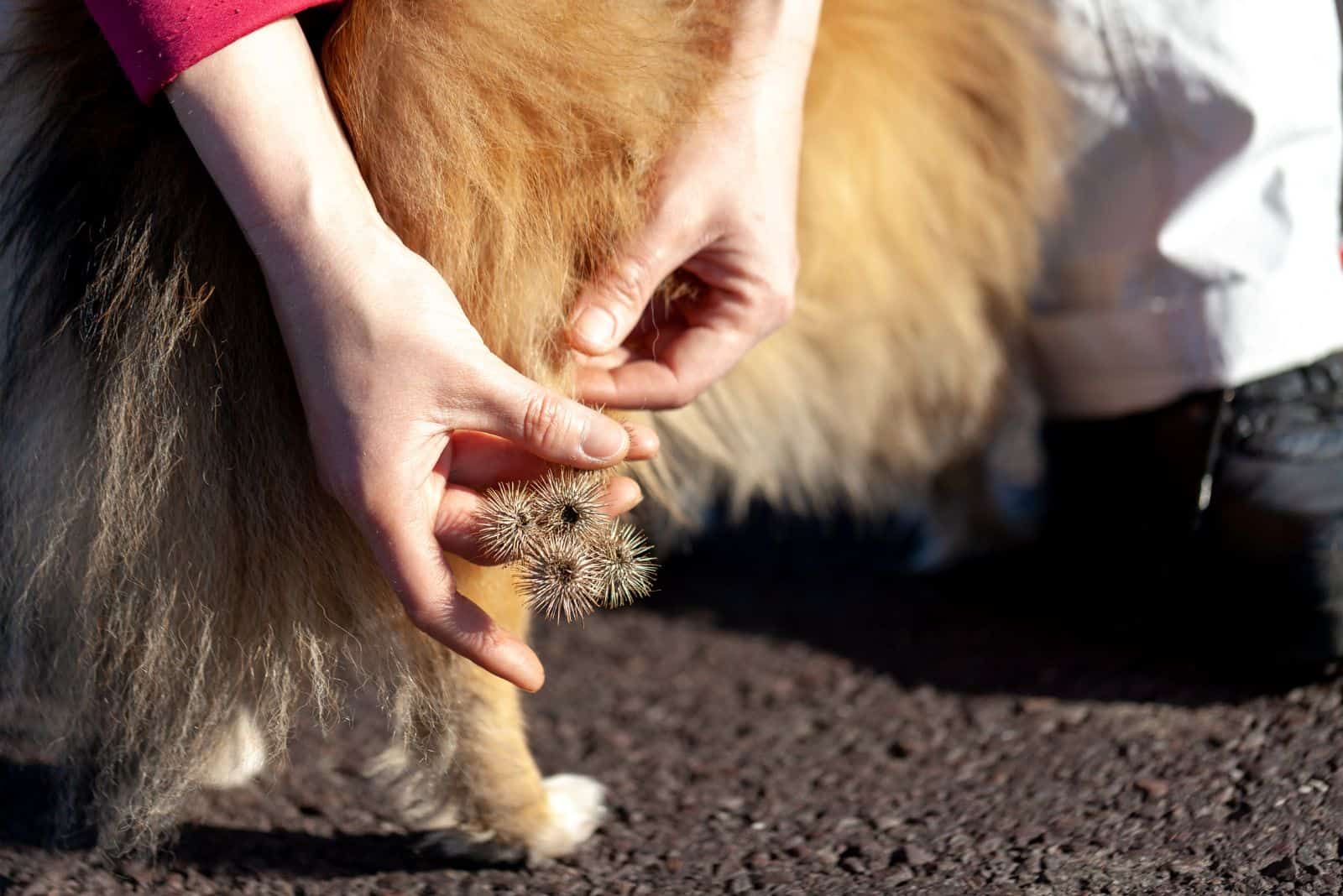
If you notice some foreign object (like a burr, a splinter, or a thorn) stuck in your dog’s paw or between its toes, you can try to carefully remove it. Using tweezers or cotton swabs will work, but make sure you remove everything completely.
Clean the wound with an antibacterial soap, spray, or diluted hydrogen peroxide, and soak the affected leg in warm water to relieve any swelling. Dry the leg, and then apply some antibiotic ointment to prevent infection from developing.
#2 Treat The Broken Toenail
If your pup experiences a sudden limp and whines in discomfort, he may have a broken toenail. This can be very painful, and even cause bleeding, which needs to be treated immediately.
First things first, you need to restrain your pup while you tend to the nail because even the sweetest dog can bite if he is in too much pain. Try to control the bleeding by wrapping the dog’s foot either in gauze or a towel, and apply slight pressure.
If the bleeding does not stop after 10 to 15 minutes, apply cauterizing powder, baking powder, or flour. Remove the damaged part of the nail with clippers. Prevent further bleeding and contamination by applying antibiotic ointment on the nail bed.
You can also consult your vet who may prescribe some meds to your pup to control the pain.
#3 Apply A Heat Compress Or An Ice Pack
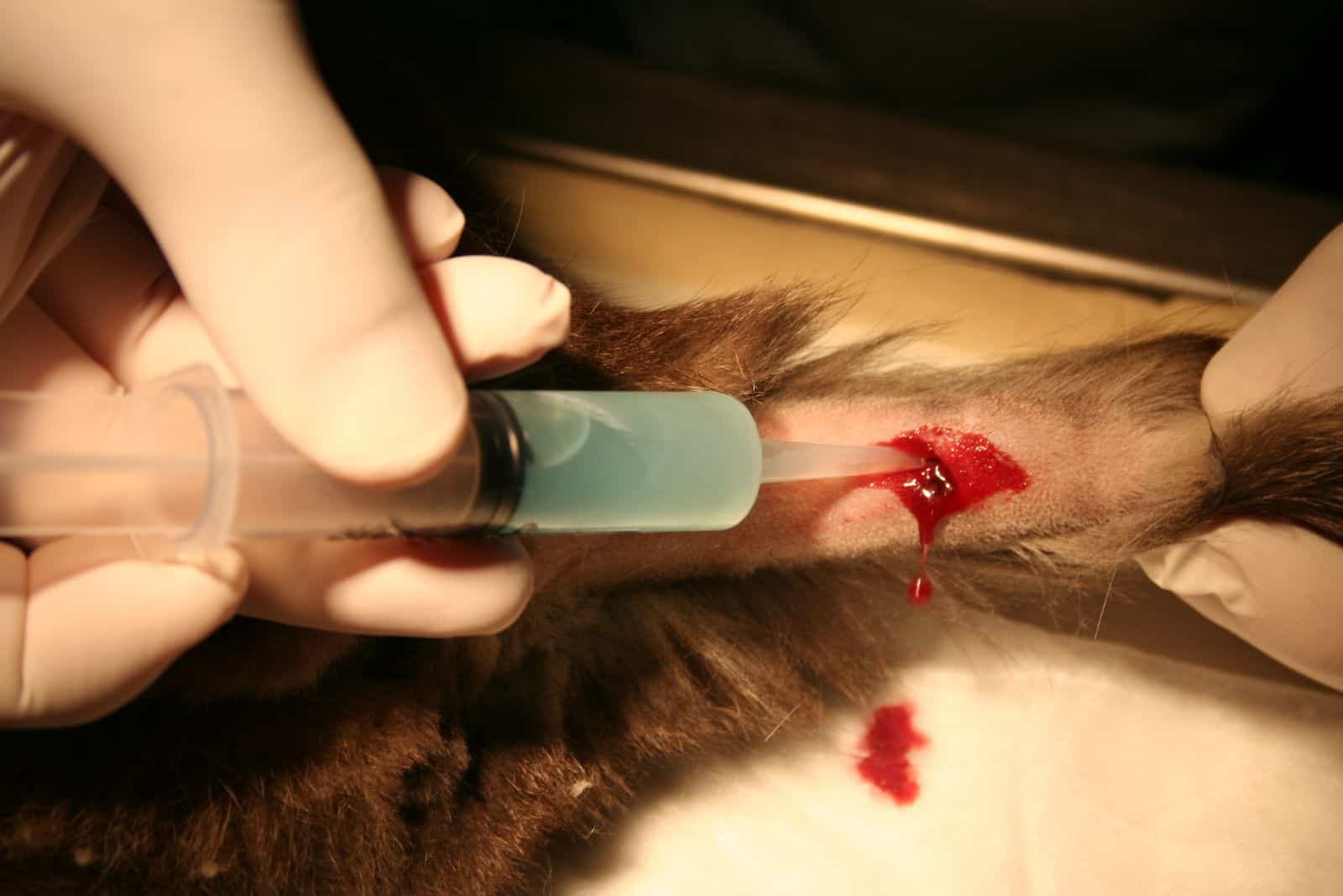
If your dog has an abscess, apply a heat compress to it. In case the abscess ruptures, you need to take your dog to the veterinarian who will clean the wound and prescribe your pup with some antibiotics.
If your dog has a sprain and some bruising, you need to apply an ice pack to the affected area twice a day for about 15 minutes. In case of an insect sting and some potential swelling, also apply an ice pack to the area.
#4 Restricting Movement And Limiting Exercise
The best remedy for lameness and sore joints is definitely getting some much-needed rest. Try to confine your pup, restrict his movement, and limit any unnecessary exercise. This may include keeping him in a crate or in a small room, or providing him with a comfortable place for resting.
Give your pooch lots of love and affection, and monitor his condition. If your pup’s condition does not improve over the next 24 hours, then seek veterinary help.
#5 Massage
When it comes to lameness caused by sore joints due to overexertion or arthritis, a gentle massage for about 10 minutes, and applying an ice pack to the affected area can be of great help.
This should alleviate any soreness, but you have to make sure that you are gentle, and that you don’t press too hard. If your pup whimpers in pain, you should stop.
#6 Joint Supplements

Joint supplements have been proven to have a positive effect on cartilage repair and reducing inflammation. In combination with NSAIDs (non-steroidal, anti-inflammatory medications), they can significantly ease your pup’s discomfort, and have other remarkable effects.
Furthermore, they tend to have less side-effects than some other pain medication; however, they do take longer to reach their full effect.
Among many joint supplements on the market, the most common ones are glucosamine and chondroitin sulfate, hyaluronic acid, omega fatty acids, curcuma, and vitamin C.
#7 Home Remedies
Besides supplements and other pain medication, there are also some home remedies, such as CBD oil and a proper diet, which can help ease the pain and limping caused by some underlying condition or disease.
The CBD industry has been growing significantly in recent years. Research on this topic is still being conducted; however, there is growing evidence that implies that CBD is a great pain reliever and a calming natural remedy even for canines.
Every healing process begins with a healthy diet. Overweight dogs suffer more pain due to the extra pressure placed on their joints. So, make sure that you feed your pup a healthy diet full of antioxidants and omega fatty acids that will support his joint health.
READ ALSO: How Heavy Should My Dog Be? A Guide To A Fit & Healthy Pup
What To Avoid When Treating A Limping Dog
Strictly avoid giving your pup any over-the-counter medication that is intended for human use, like aspirin or ibuprofen. These meds provide great pain relief for humans, but they can be very toxic for canines.
Your pup might suffer serious liver or kidney damage if he ingests these meds, so please, before you give any kind of oral medication to your pooch, consult your veterinarian.
RELATED: Help, Cerenia Killed My Dog – Shedding Light On The Matter
How Can You Tell If Your Dog’s Limp Is Serious?

It is very important to know how to determine the seriousness of the problem. To determine if your dog’s limp is serious, you’ll need to observe your dog’s behavior, and consider a few factors.
If your dog’s limp persists for more than a day or two, this could be a sign of a more serious problem.
In most cases, a severe limp is an indication of a more serious injury or condition. If your pup is also showing some other signs of discomfort and pain, such as panting, whining, or crying, it could be a sign of a more serious problem.
RELATED: Senior Dog Panting At Night: 14 Reasons & How To Help
Also, a dog that is in a lot of pain will be very reluctant to move, stand up, or put any kind of weight on the affected leg. Furthermore, a dog’s limp can be accompanied by other symptoms, like fever, loss of appetite, and difficulty breathing, which are all signs of a more serious condition.
In case you notice any of these symptoms, and you are worried about your dog’s wellbeing, it is always best to consult a veterinarian. They will be able to properly examine your pup, determine the cause of the limp, and recommend treatment if it is necessary.
An examination of the limb’s range of motion and level of pain is likely to be conducted by the veterinarian in order to diagnose a limp. In some cases, X-rays, blood testing, or joint fluid analysis will be necessary. Some broken legs and joint dislocations are treated surgically.
In case of an underlying chronic disease, meds like NSAIDs and other drugs will be prescribed to manage the pain and the inflammation, and to improve joint health.
Transportation Of The Limping Dog
When transporting your injured dog, it is very important to do so carefully in order to avoid causing further injury or discomfort. Try to keep your dog as calm and as comfortable as possible during the transport.
If it is necessary, bring their favorite toy or a blanket for comfort, and try to speak to them in a soothing voice.
If you have a small dog, you can use a carrier or a crate to transport it, but make sure that you provide support for its head and hips. The best would be to lay the dog down with the injured leg up.
For larger dogs, you can use a harness or a sling to help support their weight. This way, you can carry your pooch without putting too much pressure on the injured limb. You can also wrap your pup in a blanket, but it would be best to leave the injured limb unwrapped for safety.
If you are unable to transport your injured dog safely on your own, you will need to seek professional help. You can ask your vet for assistance or perhaps call a pet ambulance service if your area provides it.
RELATED: How To Treat Mange In Dogs At Home — 7 Best Home Remedies
To Sum Up
How to treat a limping dog at home will mostly depend on the severity of the dog’s limp. If your dog’s limp is mild, you can try some natural remedies and things that can easily be done at home.
However, if your furry friend is in a lot of pain, you will need to seek immediate veterinary attention. A lot of dog’s limps are actually a sign of a more serious problem, so it is always better to get a professional opinion.
All in all, be careful, and do not try anything you are not sure of. Until next time.
Read next:
